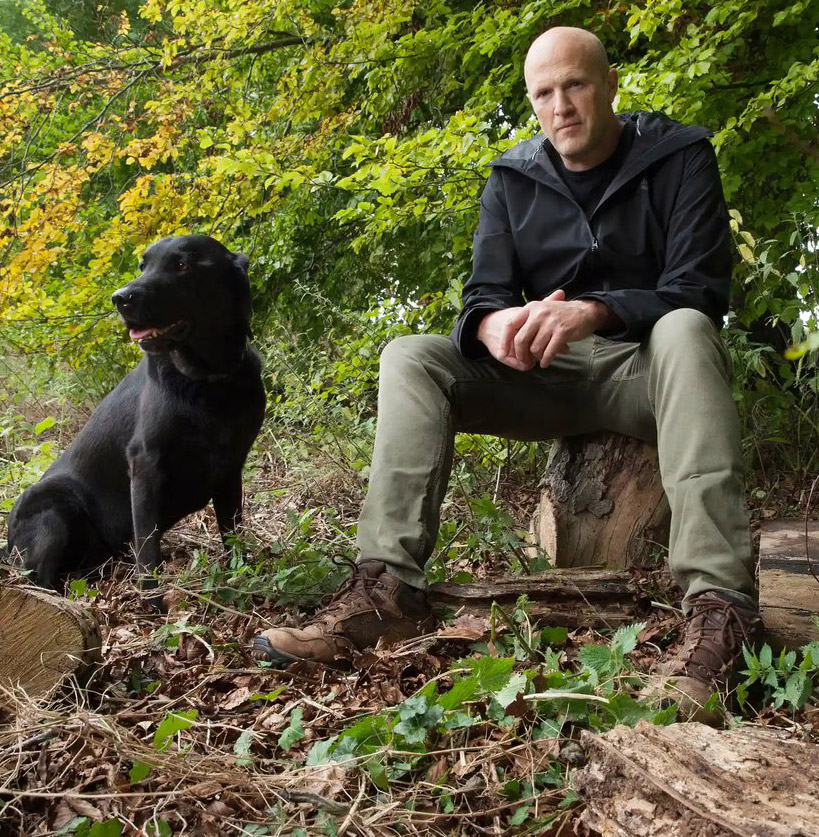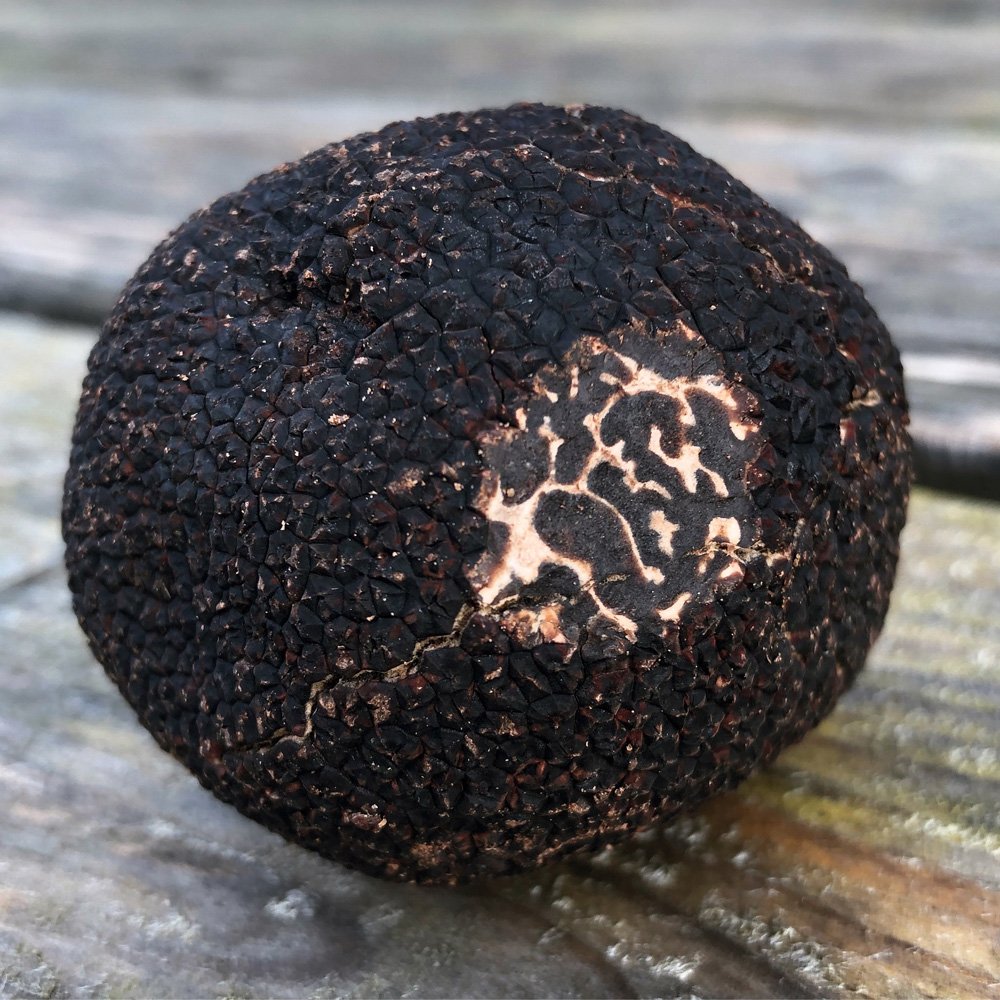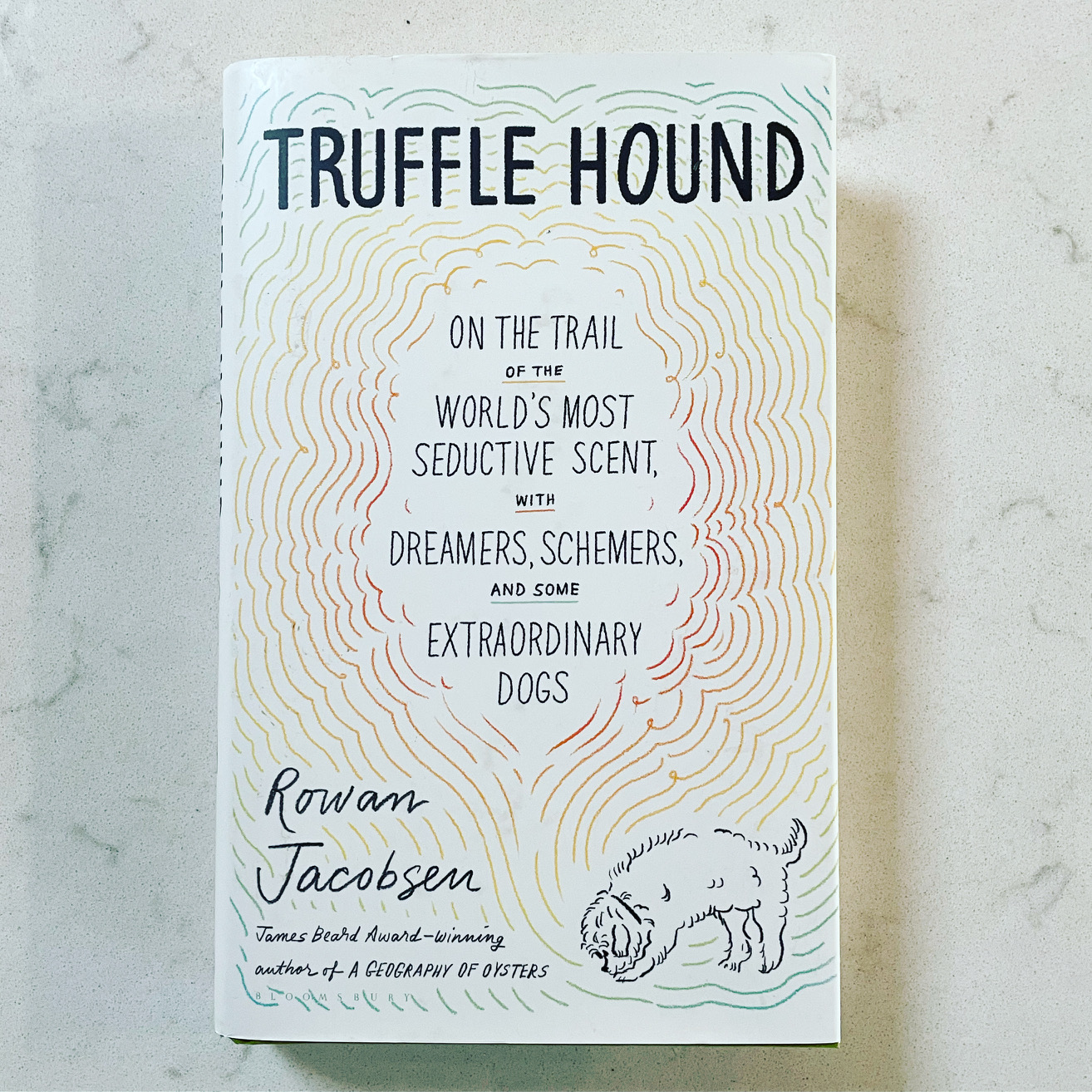A very important part of using fresh truffles is looking after them properly. Most chefs only purchase truffles once or twice a week, or maybe even less frequently, so keeping them in optimum condition for as long as possible is crucial.
Firstly, and most importantly of all, make sure your truffles are as fresh as possible when you buy them. This sounds obvious but often (from some other companies!) truffles can already be a week or two old by the time they get to your kitchen.
We always source our truffles directly from the woods – either hunted by me with my own dogs, or bought direct from our partners abroad and then sent to us straight after being hunted. Either way, we work hard on always getting the truffles to your kitchen very soon after they have come out of the ground. Our turnaround of stock is extremely rapid; we never have old truffles sitting around.
When truffles are this fresh they should, after purchase, last at least a week (white truffles) or two weeks (black truffles). But – and this is very important – the shelf life of individual truffles varies a lot. They are a fungus that grows underground and they’re absolutely not a consistent product with a fixed shelf life. So while one truffle can last many weeks in good condition, another one from exactly the same hunt may smell amazing when you hunt it, but deteriorate within a day or two of coming out of the ground.
For this reason, it is essential to manage your stock of truffles. Check them daily. Have a good look at each truffle – most chefs should be able to tell which ones look like they will last longer than others. Of course those that look like they won’t last as long should be used first. If a truffle has gone very slightly soft, but still smells amazing, then use that one first. A very firm truffle will usually last longer,
Remember that the point of a truffle is its aroma – so if it still smells amazing then it’s fine to use. A truffle would smell bad, or lose its aroma completely, long before it becomes unsafe to eat. So the fundamental rule is – if it smells good then it is good.
White truffles generally slowly reduce in aroma gradually after harvest. For this reason it is best to buy them often in small quantities. During the white season we receive fresh deliveries almost every single day. But if bought very fresh they should be good for at least a week. The exception to this is at the very start of the season – usually late September – at this point their shelf life can often be only a day or two. If buying early white truffles, use them as soon as you possibly can.
Black truffles generally actually improve in aroma after coming out of the ground. In our experience a black truffle will generally hit its peak aroma about 5-6 days after hunting and then remain good for at least another week or so after that. However, as already mentioned, each individual truffle’s shelf life can vary considerably. As a general rule you should always aim to use all truffles sooner rather than later and avoid sitting on a large amount of stock for a long time.
So… how to store them? Well firstly – in the fridge. Maybe this is obvious, but I’ve seen restaurants having truffles sitting around on display in a warm dining room, or next to a very warm pass, and then being surprised when they don’t last long. If you want to put a truffle on display that’s fine, but aim to use it up on the same day. Truffles are extremely volatile, especially white truffles, and any time spent out of the fridge – especially in a very hot kitchen – will make the truffles deteriorate much quicker. A fridge temperature of 2-5 degrees Celsius is perfect.
The traditional Italian way is to store truffles in rice, but we don’t recommend it. Rice pulls the moisture out of things (hence why if you drop your phone in water you should put it in rice to dry it out). Since truffles are over 80% water its clearly not a good idea to dry them out – it seems to pull the life out of a truffle. It will almost certainly stop them going mouldy, but at the cost of drying out your precious truffles this seems to be a mistake.
In theory truffles will ‘flavour’ the rice in which they are stored, but in practice I have found that this flavour is removed from the rice when cooked – so unless you plan to eat raw rice, this is pointless. Eggs, however, can take on the flavour of truffles really well through their shells – so it can be a nice idea to put some eggs in with your truffles for a few days before lightly cooking them – ideally then also covering them in fresh truffle slices when serving of course.
We recommend wrapping each truffle in kitchen paper, or at least lining the box with a double layer of kitchen paper, and then storing the truffles in an airtight container – plastic or glass. Truffles give off gases that will change their environment, so it’s vital to open the container every day and allow fresh air into it – even if you’re not using the truffles. They also give off moisture, so every day (or 2 days maximum) you will need to change the kitchen paper which will be wet. You should also wipe the inside of the container of any moisture that has formed.
It’s very important to carefully inspect each truffle every day. If any traces of white mould have formed on the surface of the truffle, this must be immediately brushed off when you see it – a clean dry toothbrush is ideal. This mould is totally harmless, but if left it will quickly colonise the truffle and cause it to deteriorate. I would suggest using any truffles that have shown traces of white mould on them first, as it’s often an indicator of a shorter shelf life. As always follow the rule that if it smells good then it is fine to use – if it doesn’t smell good then it should be discarded immediately.
You can also vac pack truffles. This is unquestionably the best way to keep truffles at their best but there are three essential rules to follow. Firstly, don’t let the machine pack them too tight. Remove almost all the air, but don’t let the truffles be crushed. Set your machine appropriately, or manually stop the air being sucked when almost all of it is removed. Secondly, wrap the truffles in kitchen paper before packing them, to soak up any moisture. Thirdly you must open the vac packs every two days, allow the truffles to air for a moment and change their paper towels, then repack them. This last step is vital as truffles left vac packed for more than two days will start to sweat in their own juices and the aroma will become musty and less pleasant. So never leave them vac packed for more than two days at a time. Note – white truffles respond less well to vac packing – we recommend doing this only for all types of black truffles.
Although truffles should remain in the fridge at all times for a longer shelf life, for the best aroma and taste you should bring a truffle out of the fridge at least 15 minutes before serving it. As with all ingredients, flavour is increased when the truffle is closer to room temperature. If doing this it’s best to use the whole truffle up rather than returning it to the fridge, although a very fresh truffle should usually be able to withstand a service or two of coming out of the fridge and then returning overnight.
And if you’ve bought too many truffles and can’t use them all fresh? Black truffles actually freeze very well (more on this to come in another post) so you can seal them tight and then put them in the freezer, where they’ll keep for ages. Note – freezing is for black truffles only; white truffles do not freeze well – although honey truffles certainly do. Alternatively you can grate or chop any truffle into butter, it will then keep beautifully in the fridge for as long as the butter lasts – most likely a few weeks – and can then be used in so many fantastic ways – on steak, fish, cooked vegetables, in pasta, on toast, popcorn, mashed potatoes… the list is endless. You can also freeze this butter of course. A pot of truffle butter is officially A Good Thing to have in the fridge or freezer…


